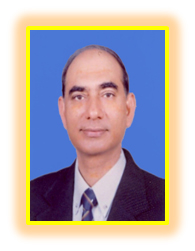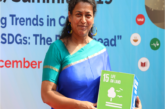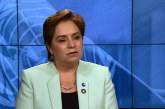Interview
Tackling Drug Menace An Interview with Shri O.P.S. Malik, Director-General, Narcotics Control Bureau, India.
Sandwiched between the ‘Golden Triangle’ and ‘Golden Crescent,’ the major global producers of psychotropic drugs, the South Asian region is the principal transit route for psychotropic drugs. The trafficking of heroin that is smuggled to western countries, added to locally produced drugs like cannabis and opium are the major drugs of abuse in the countries of the region. The strong nexus between the terrorist organizations, drug-traffickers and money launderers in South Asia has entrenched this menace. Porous borders between the countries and lax plus corrupt surveillance and monitoring mechanisms have exacerbated the trafficking and abuse of drugs in the belt extending from Southeast Asia to Central Asia. Most of the nations in the region are party to one or the other of the UN Conventions on drug trafficking, but their provisions are not incorporated into the domestic legal framework. Consequently, the legal provisions applicable in these countries are not sufficient to deal with the complexities of this trade. The following tabulation provides an overview of drug-trafficking in the region.
Keeping in view the magnitude of the problem of drug-trafficking in South Asia and the growing threat that emanates from the enhanced narco-terrorism nexus for India’s national and domestic security, the Editor of the Focus Reporter has recently interviewed Shri O.P.S. Malik, Director-General of Narcotics Control Bureau, Government of India, New Delhi.
About Sh O.P.S. Malik
Sh. O.P. S. Malik took over as Director General of the Narcotics Control Bureau (NCB) on 17 December 2008. A 1975 batch IPS officer of the Utter Pradesh Cadre, Shri Malik was holding the post of Additional Director General, Sashastra Seema Bal (SSB), before taking over as DG-NCB. Apart from being an experienced senior bureaucrat, Sh Malik has a vision and pragmatic approach to deal with exigencies with far-sightedness and find lasting solution to the existing problems. Over the years, NCB has been able to make a remarkable increase in its resources, both manpower and material. In 1986, NCB had the manpower strength of 164 personnel which has increased to 898 in 2011, besides substantial logistic augmentation. NCB was started with 5 zones and today it has 13 zones, 12 Intelligence Cells and 3 Regional Deputy Director Generals across the country. Within a short span of two-and half years, the NCB has made many strides in curbing the menace of illicit drug-trafficking under the dynamic guidance and inspiring leadership of Sh Malik.
INTERVIEW
Editor: What is the magnitude of the problem of drug abuse in India?
Sh Malik: As per the National Drug Abuse Survey conducted by the ministry of social Justice & Empowerment and the UNODC in 2001, 8.7 million people are user of cannabis and over 2 million are user of opiates in the country. Besides, Buprenorphine, propoxyphene and Heroin are commonly injected drugs which are abused. Subsequent to the above no further survey has been conducted till date. However, the latest assessment indicate that there are approximately 11 million drug addicts in the country and the most common drugs of abuse are ganja, hashish, opium and heroin. Pharmaceutical preparations like buprenorphine, codeine based cough syrups and painkillers like proxyvon have also assumed serious proportions.
Editor: Which segments of the society are more vulnerable to drug abuse?
Sh Malik: Consumption of drugs like cocaine, MDMA, Ecstasy is found among rich and high end abusers. Consumption (Mainly of recreational type) is rising in young professionals and students. Consumptions of ganja and opiates are found among poor and low end abusers like labourers, rickshaw pullers, etc.
Editor: What quantum of success has been achieved by the NCB in controlling drugs proliferation in recent years?
Sh. Malik: NCB is the national Nodal Agency for effective prevention and combating abuse of narcotic drugs and psychotropic substances and illicit traffic in them. The overall seizures of various narcotic drugs and psychotropic substances made by all drug law enforcement agencies as well as NCB is mentioned below:-
| Year | 2007 | 2008 | 2009 | 2010 | ||||
| Name of drug | All India | NCB | All India | NCB | All India | NCB | All India | NCB |
| Opium | 2226 | 170 | 2033 | 105 | 1732 | 133 | 1404 | 52 |
| Morphine | 43 | 0 | 73 | 2 | 42 | 1 | 23 | 0 |
| Heroin | 1186 | 178 | 1063 | 212 | 1047 | 190 | 694 | 145 |
| Ganja | 107881 | 3676 | 103211 | 140 | 208764 | 4483 | 162190 | 564 |
| Hashish | 5181 | 1440 | 4084 | 202 | 3549 | 217 | 3953 | 451 |
| Cocaine | 8 | 1 | 12 | 0 | 12 | 1 | 22 | 2 |
| Methaqualone | 1 | 1 | 2382 | 172 | 5 | 5 | 20 | 0 |
| Ephedrine | 395 | 290 | 1284 | 139 | 1244 | 218 | 2207 | 2041 |
| LSD (sq. Paper) | 2077 | 0 | 0 | 0 | 0 | 0 | 0 | 0 |
| Acetic Anhydride | 236 | 0 | 2754 | 87 | 1038 | 340 | 81 | 0 |
| Amphetamine | 0 | 0 | 20 | 12 | 41 | 41 | 47 | 45 |
In addition to the above , NCB in coordination with other organizations and the state authorities has been successful in identifying and destroying illicit opium poppy cultivation during last 3 years as per details below:-
(In Acres)
| Year | Area destroyed |
| 2008 | 1820 |
| 2009 | 5532 |
| 2010 | 7631 |
| 2011 (on going) | 7864 |
Editor: Is the NCB getting required support and cooperation of state governments in implementing its counter measures against drug abuse?
Sh Malik: The state governments are cooperating in the interdiction efforts and are actively involved in checking the drug menace. Approx. 79% of the total seizure of various drugs is done by the state government agencies. The state governments are also taking steps through awareness programmes for demand reduction. The state governments have been cooperative in identifying and destroying the illicit opium poppy cultivation. We also give financial assistance to state for strengthening mechanism.
Editor: What suggestions do you offer to have a drug-free India?
Sh Malik: NCB is the Nodal agency for coordination of actions of various ministries, departments and states in respect of matters relating to drugs. To sensitize the masses especially students regarding the evils of drug abuse, NCB HQrs and its Zonal Units in association with various state Anti Narcotics Task Force and other Agencies organize innumerable demand reduction activities.
To have a drug-free India, all stake holders, the state government and the NGOs should make all out efforts by undertaking the following activities for awareness and the ill effects of the drug abuse:-
- Broadcast/Telecast Drug Awareness messages and programmes on Radio Modulation and Television channels during the prime time.
- Pamphlets, posters, stickers, T-Shirts and caps notifying ill effects of drug abuse should be distributed in the affected areas of abuse.
- Flashed instant messages of awareness on screens displayed at public gathering places like Airports, Railway Stations, Cinema Halls, Bus Terminals/Stands, Shopping Malls etc.
- Regular awareness messages through print media i.e. leading daily news papers and magazines.
- Compulsory inclusions of curriculum on awareness of drugs and their ill effects in all the educational institutes from secondary level.
- The strategy for drug control is two folds: Demand Reduction and Supply Reduction. While enforcement effort is diverted towards reducing the supply, demand Reduction is a preventive measure.
- Drug Law Enforcement in India is a multi agency function. The NCB, being the National Nodal Agency, coordinates actions of all agencies. Our endeavor is to generate synergy amongst all agencies with a view to ensure effective action in the field of drug control.



